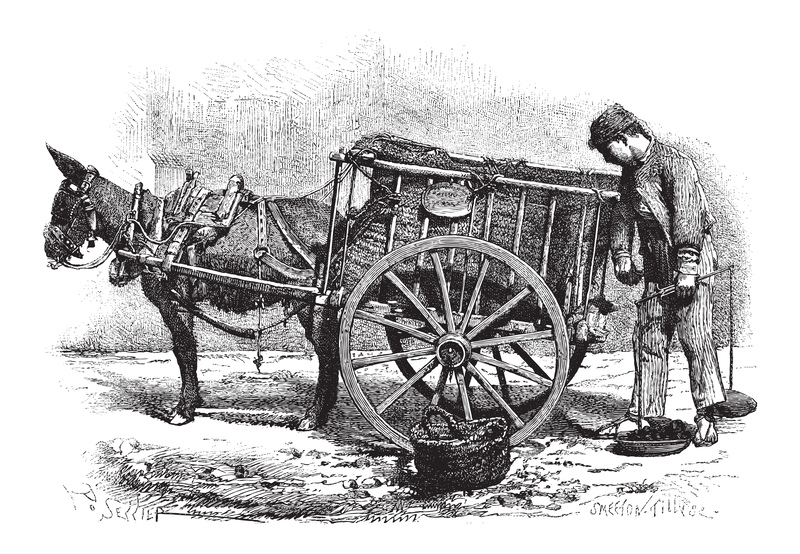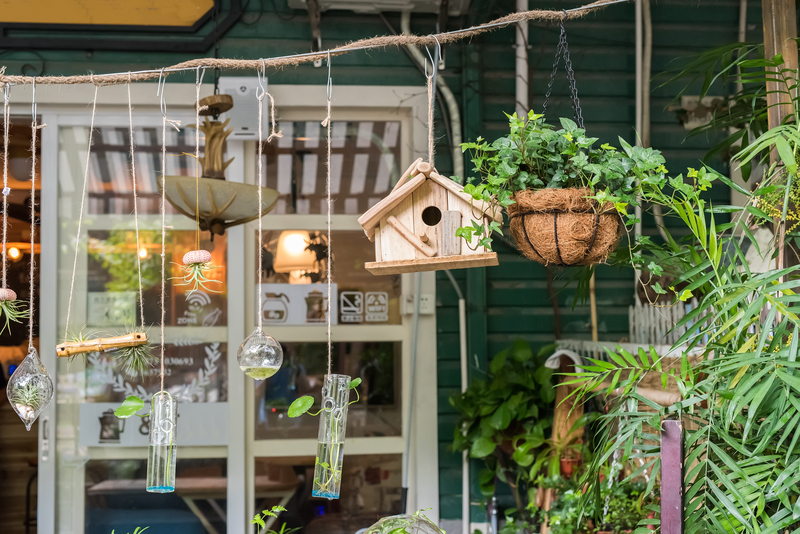The Lifecycle of Plastic in the Recycling Ecosystem
Plastic has become an essential material in modern society, revolutionizing industries and daily life with its versatility, durability, and cost-effectiveness. However, the proliferation of plastic has also introduced significant environmental challenges, most notably in waste management and pollution. To combat this, focused attention on the plastic recycling lifecycle is more critical than ever. This comprehensive article explores the complete journey of plastic within the recycling ecosystem, from its creation to eventual repurposing, highlighting challenges, innovations, and future outlooks.
Understanding Plastic and Its Ubiquity
Plastic is a synthetic material derived mainly from petrochemicals. Its proliferation across packaging, construction, automotive, healthcare, and electronics industries has led to convenience but also to massive waste generation. An estimated 400 million tons of plastic waste is produced annually worldwide, and only a fraction is successfully recycled. Understanding the lifecycle of plastic in the recycling ecosystem is crucial for addressing this environmental debacle.
- Wide Usage: Plastic is found in virtually every sector, making waste management a universal challenge.
- Long Degradation Time: Plastics often persist in the environment for centuries if not properly recycled.
- Diverse Compositions: There are dozens of plastic types, each with specific recycling requirements.

Step 1: The Creation of Plastic Products
Raw Material Sourcing
The lifecycle of plastic begins with extraction of raw materials such as crude oil and natural gas. These resources are refined into monomers like ethylene and propylene, which are chemically bonded to create various polymers. Common plastics include PET, HDPE, LDPE, PVC, and polypropylene.
- Petrochemical Dependency: Most plastics are fossil fuel derivatives, contributing to carbon emissions.
- Alternative Feedstocks: Recent innovations have explored bioplastics made from plant-based sources.
- Polymerization Processes: The chemical reactions result in different plastic types, each with unique attributes and recyclability characteristics.
Product Manufacturing and Distribution
Once polymers are formed, they are processed into consumer goods ranging from single-use packaging to durable automotive components. These products are then distributed across global markets, entering the hands of consumers and businesses.
Step 2: Consumption and Collection - The Onset of Plastic Waste
Consumer Use
After manufacturing, plastic products serve their intended purpose, often for a period much shorter than their lifespans. Single-use plastics dominate global waste streams, particularly in packaging.
- Short Lifespan: Many plastic items are used for mere minutes yet last for centuries in landfills or the environment.
- Waste Generation Hotspots: Urban areas typically produce the most plastic waste due to dense populations and consumer behavior.
Collection and Sorting
The first stage in the recycling ecosystem is the collection of used plastics. This may occur through:
- Residential Recycling Programs - Curbside collection of plastics sorted by number (1-7) as marked on packaging.
- Industrial and Commercial Collection - Bulk collection from businesses and organizations.
- Informal Collection: In developing countries, waste pickers play a vital role in gathering recyclables.
Sorting is crucial as different plastics require unique recycling processes. Advanced facilities utilize automated sorting technology such as infrared sensors and air jets, but manual sorting is common in many areas.
Step 3: Cleaning and Preparation
Contaminant Removal
Collected plastics are often contaminated with food residues, labels, adhesives, and other non-plastic materials. Effective cleaning is necessary to ensure high-quality recycled output. This typically involves:
- Rinsing and Washing: Plastics are washed with water and detergents to remove dirt and residues.
- Mechanical Separation: Technologies like float-sink tanks help separate plastics based on density.
Shredding and Sorting
Post-cleaning, plastics are mechanically shredded into small flakes or pellets. This increases surface area, facilitates further cleaning, and prepares the material for reprocessing. Additional sorting ensures that recycled input is as pure as possible.
Step 4: Reprocessing - Turning Waste into Raw Material
Types of Plastic Recycling
There are several methods by which plastics are recycled within the recycling system:
- Mechanical Recycling: The most common approach. Cleaned plastics are melted and remolded into new products. This process works best with single-polymer streams, especially PET and HDPE.
- Chemical Recycling: Involves breaking plastic polymers down into their monomers, which can be re-polymerized into new plastic. This method is more energy-intensive but allows recycling of plastics that are otherwise non-recyclable mechanically, like multi-layer flexible packaging.
- Energy Recovery: Plastics can also be incinerated to generate energy. While this diverts plastic waste from landfills, it does not create new plastics and raises concerns about environmental emissions.
Challenges in Plastic Reprocessing
Despite technological advancements, several obstacles impede optimal recycling performance:
- Degradation of Quality: Recycled plastics often display diminished mechanical properties compared to virgin plastics.
- Blending Issues: Mixed plastic types can limit end uses or degrade the performance of the recycled product.
- Color and Purity: Impurities and colored plastics limit recycling options and value.
Nevertheless, innovative processing methods and additives are constantly improving the scope and quality of plastic recycling.
Step 5: Manufacturing New Products
From Recycled Resins to Retail
The end product of reprocessing is recycled plastic resin, which can be used in a wide range of applications. Today's eco-conscious brands and manufacturers increasingly utilize recycled content in their products to support sustainability initiatives.
- Packaging: Bottles, containers, and film wraps made from recycled PET or HDPE are common.
- Construction: Pipes, decking, and insulation materials incorporate recycled plastics.
- Consumer Goods: Clothing fibers, toys, and electronics can all contain recycled plastics.
Quality Control and Certification
Ensuring the performance and safety of recycled plastic products requires rigorous quality control. Products may carry labels and certifications, such as the recycling Mobius loop or ISO standards, to assure consumers of responsible production practices.
Challenges and Limitations in the Plastic Recycling Lifecycle
Systemic Barriers
- Lack of Infrastructure: Many regions lack adequate collection and recycling facilities, reducing the proportion of plastics that are recycled.
- Economic Viability: Virgin plastic is often cheaper, making recycled alternatives less competitive in the global market.
- Consumer Behavior: Low participation rates and poor sorting limit recycling's effectiveness.
Types of Plastics That Are Hard to Recycle
Not all plastics are created equal in recyclability. Some, like thermosets and composites, are almost impossible to recycle at scale due to their chemical structures. Multi-material packaging and plastics with additives or contaminants pose additional hurdles.
Innovations in the Plastic Recycling Ecosystem
Advanced Recycling Technologies
New technologies promise to revolutionize the plastic waste lifecycle:
- Enzymatic Recycling: Using engineered enzymes to break down plastics at a molecular level, offering near-infinite recyclability for certain polymers.
- AI-Driven Sorting: Artificial intelligence enables more accurate and efficient materials sorting, minimizing contamination and improving throughput.
- Closed-Loop Systems: Designing products with the end-of-life in mind, ensuring easier recyclability and reprocessing.
Bioplastics and Circular Economy
The rise of bioplastics--plastics derived from renewable resources such as corn starch or sugarcane--offers alternatives with lower environmental footprints. Additionally, the circular economy model emphasizes the continuous reuse of materials, reducing reliance on finite resources and minimizing waste.
The Role of Consumers and Policy in the Plastic Waste Journey
Consumer Education and Engagement
Empowering individuals with knowledge about plastic recycling lifecycle can significantly improve recycling rates. Simple actions--like proper rinsing, sorting, and reducing dependency on single-use plastics--can create substantial positive impacts.
- Clear Labeling: Easy-to-read packaging information guides proper recycling behaviors.
- Community Initiatives: Local drives, drop-off centers, and educational campaigns mobilize public participation.
Governmental Policies and Extended Producer Responsibility
Effective policy frameworks--such as bans on single-use plastics, recycling mandates, and incentives for using recycled materials--are already driving change globally. Extended Producer Responsibility (EPR) holds manufacturers accountable for the lifecycle of their products, encouraging eco-design and take-back programs.

Future Outlook: Towards a Sustainable Plastic Recycling Model
Vision for a Closed-Loop System
The ultimate goal is a closed-loop system, where plastics never become waste but rather circulate continuously within the recycling ecosystem. Achieving this requires collaboration across the value chain--from chemical innovation to responsible consumer behavior and robust governmental policies.
- Product Design: Simplifying plastic types and eliminating additives that hinder recycling.
- Standardized Collection Systems: Uniform systems boost efficiency and transparency.
- Global Cooperation: Addressing plastic pollution requires cross-border solutions and shared responsibility.
Conclusion: Making Every Piece of Plastic Count
The lifecycle of plastic in the recycling ecosystem is a complex journey, entailing multiple stages from production and consumption to collection, processing, and rebirth as new products. Understanding and improving each step in this cycle is vital for minimizing environmental impacts and paving the way towards a sustainable future. Through technological advancements, responsible policies, and consumer engagement, we can transform plastic from a persistent pollutant into a perpetual resource, making every piece count in the ongoing battle against plastic waste.
Frequently Asked Questions (FAQs)
-
Why is plastic recycling important?
Plastic recycling reduces landfill waste, conserves resources, and lowers carbon emissions by decreasing the need for new plastics production. -
What types of plastics are most commonly recycled?
PET and HDPE plastics are the most frequently recycled due to their wide usage and recyclability. -
Can all plastics be recycled?
No, some plastics--like multi-layer films, thermosetting polymers, or heavily contaminated items--are challenging or impractical to recycle. -
How can individuals improve plastic recycling rates?
By properly sorting recyclables, following local guidelines, reducing usage, and advocating for better recycling infrastructure and policies.
By embracing the full lifecycle of plastic recycling, we can collectively reduce waste and protect the planet for generations to come.